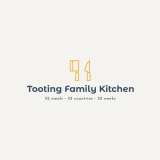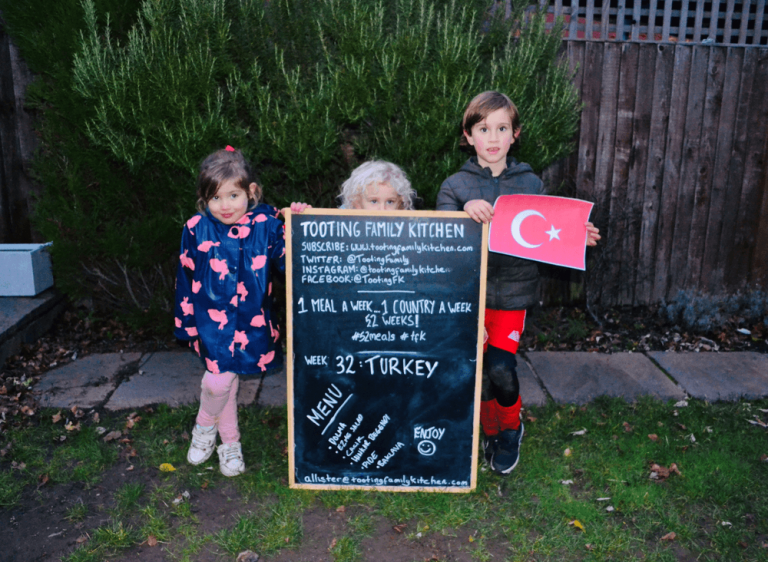
Thank you for joining Tooting Family Kitchen for Week 32 of our 52 Meals Challenge. If you are hitting our blog for the first time, welcome! We are on a culinary journey, exploring different cuisines from around the world to get kids cooking and learn about different International Cuisines and Cultures – celebrating Diversity through Food.
We have set ourselves a challenge to cook 52 Meals from 52 Countries in 52 Weeks, sharing our family cooked recipes and experiences as we go. If you like our content please do share and subscribe (at bottom of the page) to ensure you don’t miss out on future family cooking destinations – we promise we won’t spam you, just a weekly reminder when we publish our latest International recipes 😊
I have been looking forward to Turkey and certainly when I first sat down and thought about the challenge of cooking 52 Meals, Turkey was always going to be one of the big ones. Having spent four years of my life living in Germany and having a brother who has lived there for the best part of 20 years, I got pretty familiar with Turkish cuisine, Turks being the largest immigrant group in Germany. I dread to think about the number of Doner kebabs I would have eaten between 1999 and 2003…but if anyone reading this has an aversion to the kebabs you might eat on a Friday night in town after 10 pints of Stella…trust me, if anything is going to change your mind about these wonderful Turkish creations, it will be the varieties served up in Germany, or of course Turkey, where they are taken to another level!
I have also felt a fair amount of pressure in cooking Turkish food. I am delighted and hugely appreciative to have a fair few Turkish readers and visitors to the blog and I am often reminded of the Turkish influence/ownership or indeed sole rights, to some of the foods I have cooked. There is an argument that Iranian style kebabs, Albanian style Qofte, Uzbek style Manti, Lebanese style Kibbeh and Greek style lamb, among other dishes, all have a foot hold in Turkish culture and all can be up for (friendly) debate. Food is clearly a huge part of preserving culture and over the centuries food, culture and history has become so interwoven, and let’s face it..the Ottomans Empire was not shy about making a land grab or two. But equally, food connects us and brings people together and I feel lucky to live in such a diverse place with so many cuisines and cultures on my door step. On the subject of debate, it is argued (although not by many…or perhaps any) that Tooting market was the inspiration behind Istanbul’s Grand Bazar…you heard it here first!
Tis the season to be jolly and on the subject of cooking, ‘Turkey’ has made it quite a confusing week in our house having to distinguish between the country and our plump feathered friends! “Why are we cooking Turkey now Daddy?”, “Why is Turkey named after a bird Daddy?”, “Are Turkey’s Turkish Daddy?” If there was anything to overshadow the confusion (and this is not a spurious claim regarding Tooting Market), it was the discovery that Santa Clause is not actually from the North Pole but is indeed from Turkey! Saint Nicholas was born in modern day Demre on the Turkish Mediterranean Coast…”Daddy, do we have Turkey because Santa Clause is from Turkey?”.
Turkey’s influence on the world is unquestionable and empires aside, its positioning, quite literally in the centre of the world, along with its cuisine, culture, scenery and nature make it the sixth most visited tourist destination on the planet. In addition, from their main airport, Istanbul Atatürk, it is possible to fly to over 250 destinations. A clearly innovative and creative nation there is a claim to be thankful to Turkey for early vaccines, the flushing toilet, money and air travel, but all pale into insignificance when stacked against the jelly bean…inspired by the 18th century invention of the Turkish Delight.
For me though, aside from kebabs of course, there are two more things that really resonate about Turkey. The first is Tea…most Turks drink between 5 & 10 cups of this beautiful beverage a day making them the largest consumers per-capita in the world! An incredible 96% of the population are said to drink it on a daily basis. The second is their national sport of oil wrestling. This centuries old traditional male sport involves wearing a type of handmade leather trousers called Kisbet, dousing yourself in olive oil and wrestling, with the aim of achieving an effective hold of your opponent’s Kisbet! Kebab, cup of tea and a spot of oil wrestling…this is what Friday nights are made for!
We hope we have done Turkish food justice with this weeks feast!
Tooting Family Kitchen cook a Meze of Dolma, Ezme Salad and Cacik followed with Hunkar Begendi, Pide and Baklava
Getting the veg prep'd
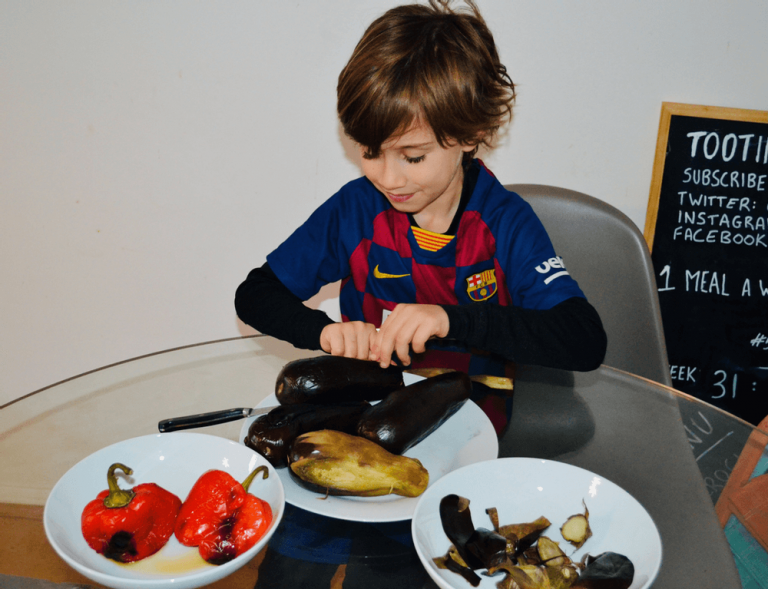
Rolling the Dolma
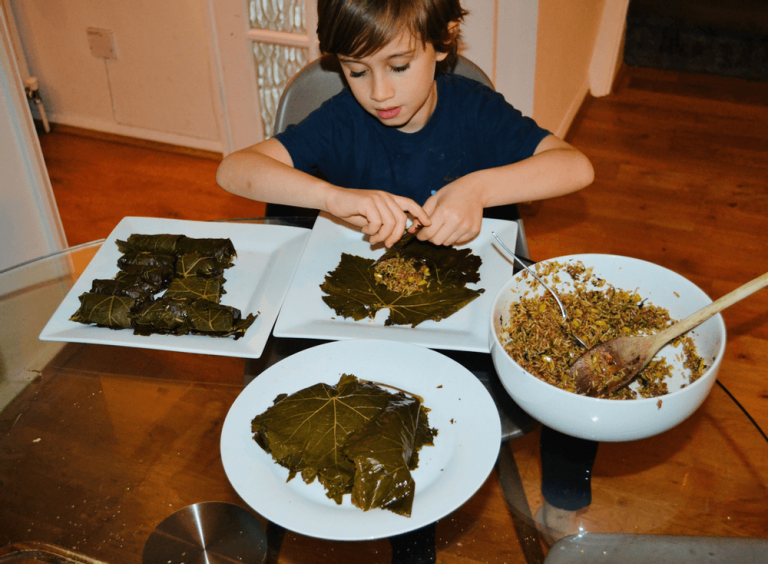
Getting the Pide ready
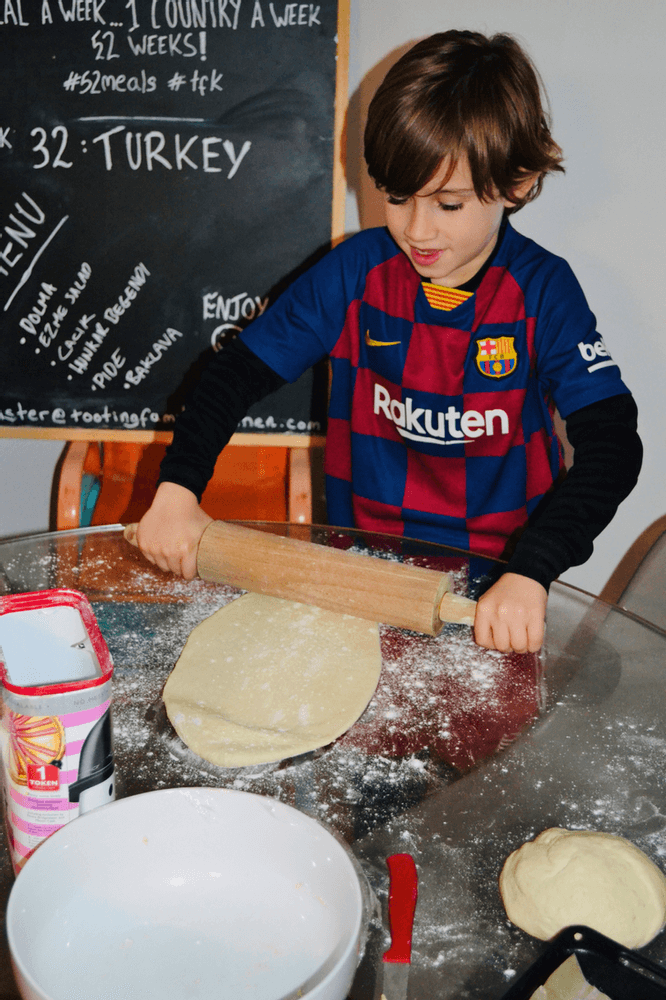
Toppings!
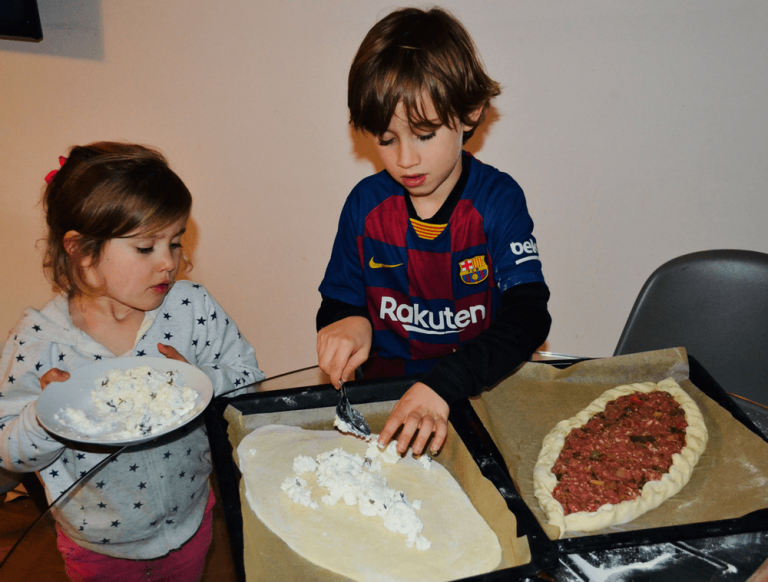
Layering the Baklava
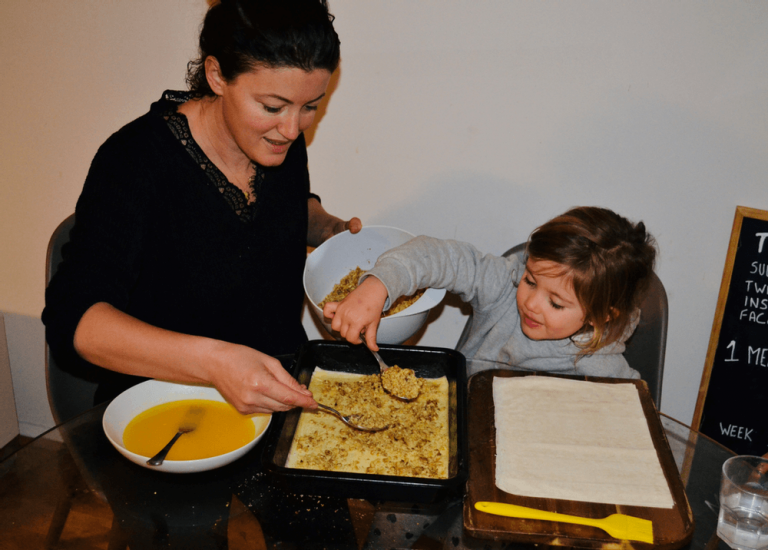
Dolma
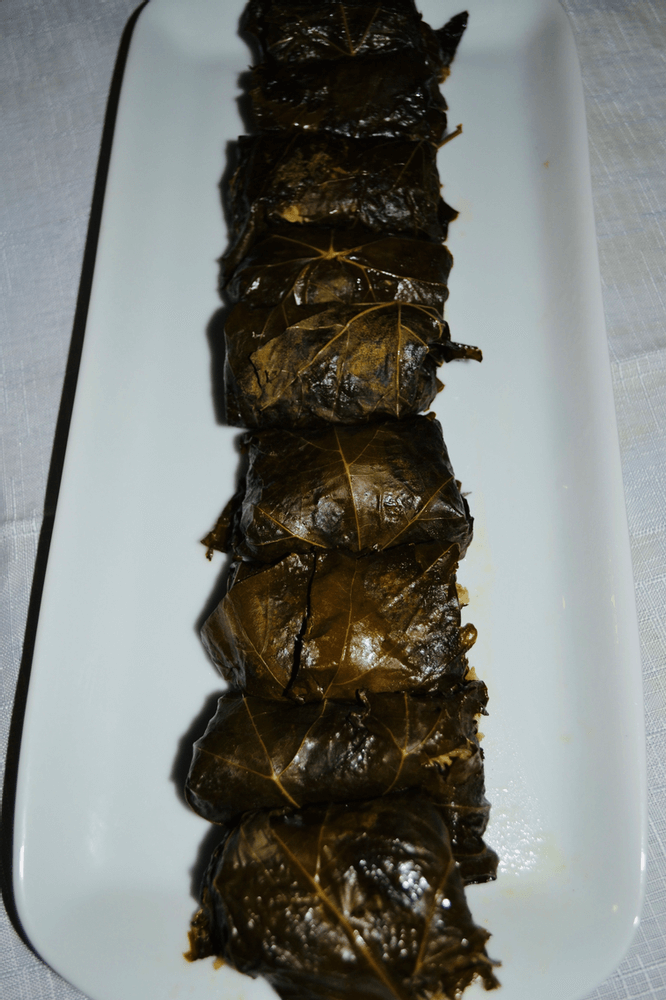
What’s in it...
1 jar of sterilized vine, washed and drained
1 cup of rice, washed and drained
2 onions, finely chopped
Small bunch of parsley, chopped
Small bunch of chopped mint
6 tbsp olive oil
100g pine nuts
100g raisins
1 tsp allspice
1 tsp sugar
½ tsp cinnamon
Salt and pepper to taste
Juice of 1 lemon
What to do with it...
- Heat the oil and gently fry the onions until softened and then add the pine nuts and continue to fry for a 2 more minutes before adding the rice. Continue to fry for another 5 minutes whilst stirring.
- Add the all spice, sugar, cinnamon, seasoning and raisins along with the parsley and mint and combine before adding 100ml of boiling water and simmering for 5 minutes – the water should be absorbed pretty quickly. Remove from heat and allow to cool.
- Separate out the vine leaves and for each one place a spoonful of the mixture at the base of the leaf, fold the sides in then roll up. If the leaves our smaller, or broken into bits you can put together to make a bigger surface area – keep a couple of leaves back to line the pan for cooking.
- When ready to cook line a heavy bottom pan with lid with the leftover leaves and line up the Dolmas snuggly on top. If necessary you can put a plate on them to push down. Drizzle with a little more oil and squeeze over the lemon and the pour over a cup of boiling water and simmer with the lid on for another 20 mins or until water is all absorbed and they are cooked through. Allow to cool before serving.
Ezme Salad
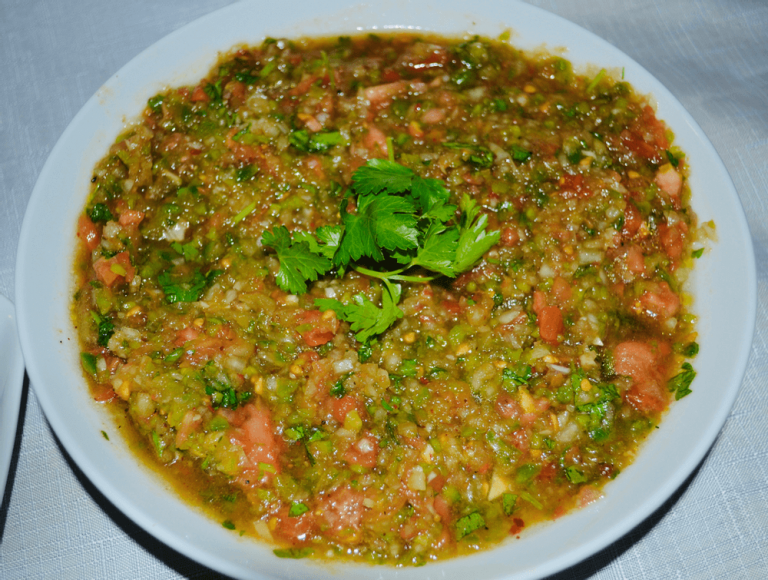
What’s in it...
3 large ripe tomatoes
1 green pepper, roughly chopped
1 onion, roughly chopped
1 clove garlic, rough chopped
Small bunch of parsley
3 tbsp olive oil
Salt and pepper to taste
Pinch of chilli flakes
Pinch of Sumac
Pinch of dried mint
Juice of half a lemon
2 tbsp pomegranate molasses (sugar can be used instead)
What to do with it...
- Make a cross at the bottom of each tomato and plunge them in boiling water for a minute and then in cold water before peeling.
- Place the tomatoes, green pepper, parsley, onion and garlic into a food processor and give a few pulses. You want the mixture lumpy with texture and not completely smooth – for best results chop finely by hand!
- Pour into a bowl and add the olive oil, seasoning, chilli flakes, sumac, mint, lemon and molasses, combining well.
- Chill in the fridge before serving.
Ezme Salad
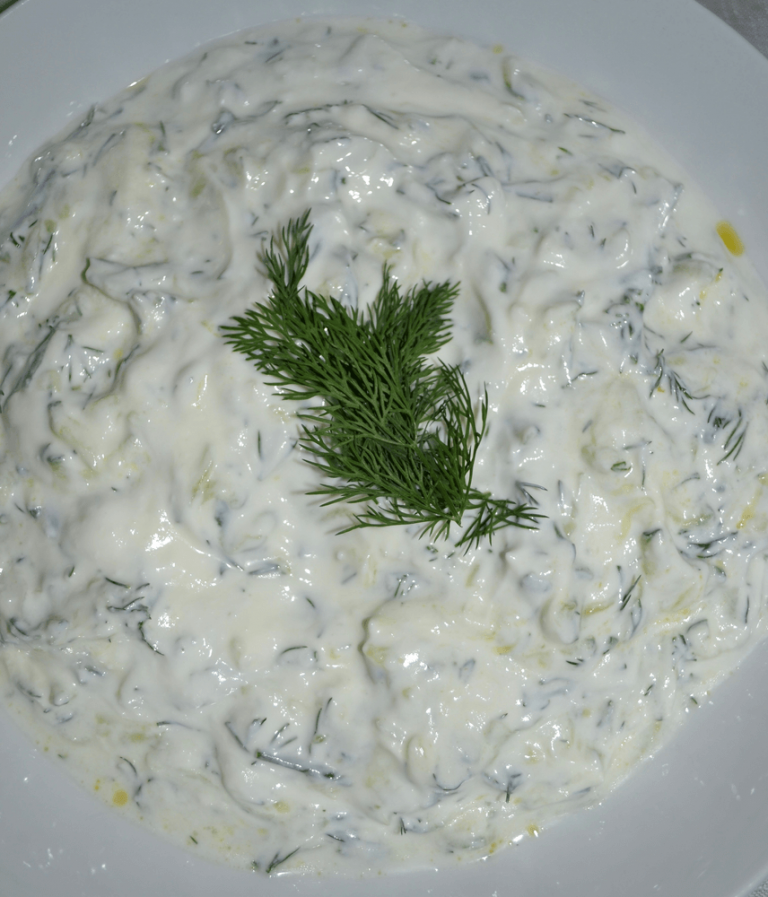
What’s in it...
500g of natural full fat yoghurt
1 cucumber, de-seeded and grated
1 clove of garlic, minced
1 bunch of dill, chopped
Drizzle of olive oil
Salt to taste
What to do with it...
- Cut the cucumber in half and scope out the seeds with a spoon and discard. Grate the remaining cucumber into a bowl before emptying contents into the middle of a clean cloth and squeezing out the moisture. Add the cucumber the yoghurt along with the garlic and dill and stir before adding salt to taste. Serve drizzled with olive oil.
Ezme Salad
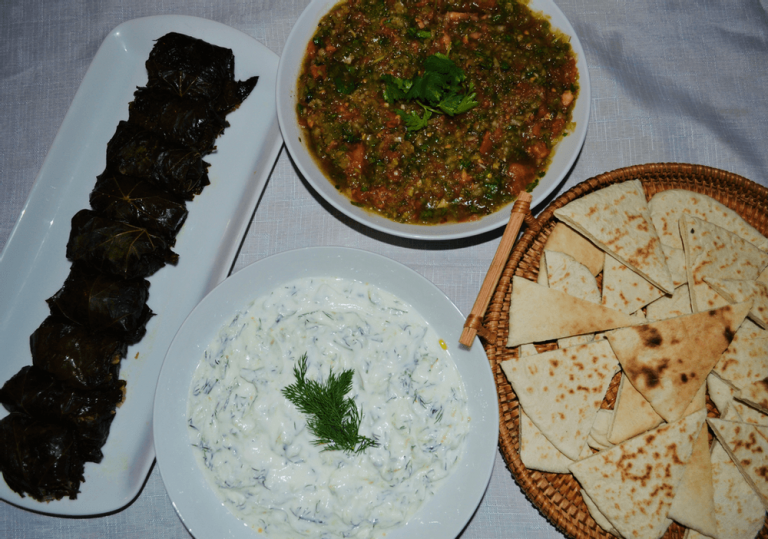
Meat Pide
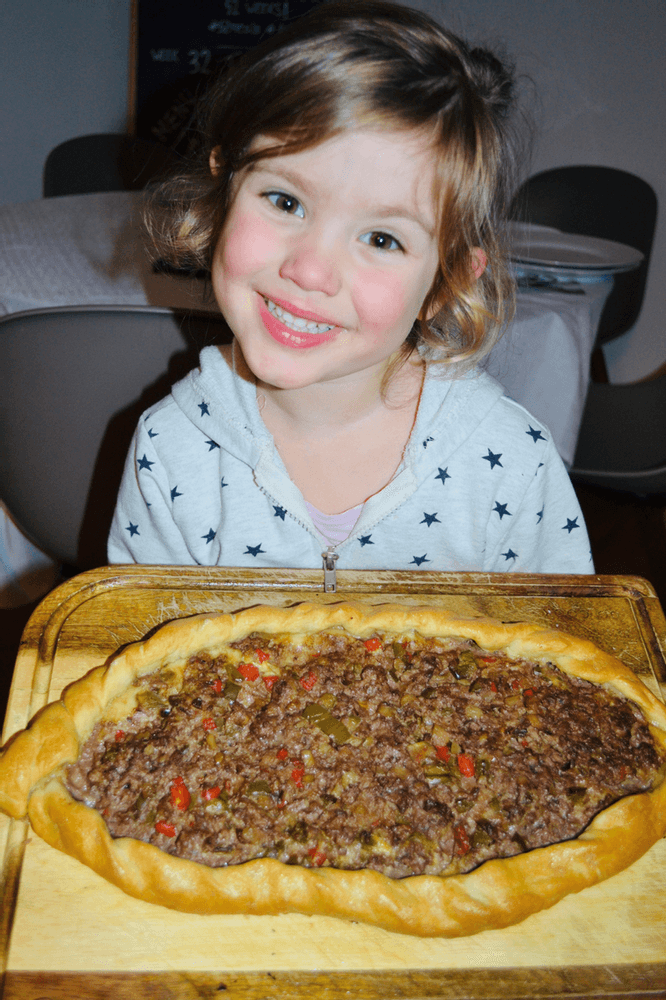
What’s in it...
Dough
300g of all-purpose flour
1 tsp of salt
2 packs of fast acting yeast (7g packets)
3 tbsp of olive oil
1 cup of luke warm water
1 egg mixed with a little water to brush dough before cooking
Meat Pide topping
200g of minced beef
2 cloves garlic, minced
1 medium onion, finely chopped
½ green pepper, chopped
½ red pepper, chopped
1 large tomato, de-seeded and chopped
1 tbsp of lemon juice
Salt and pepper
Cheese Pide
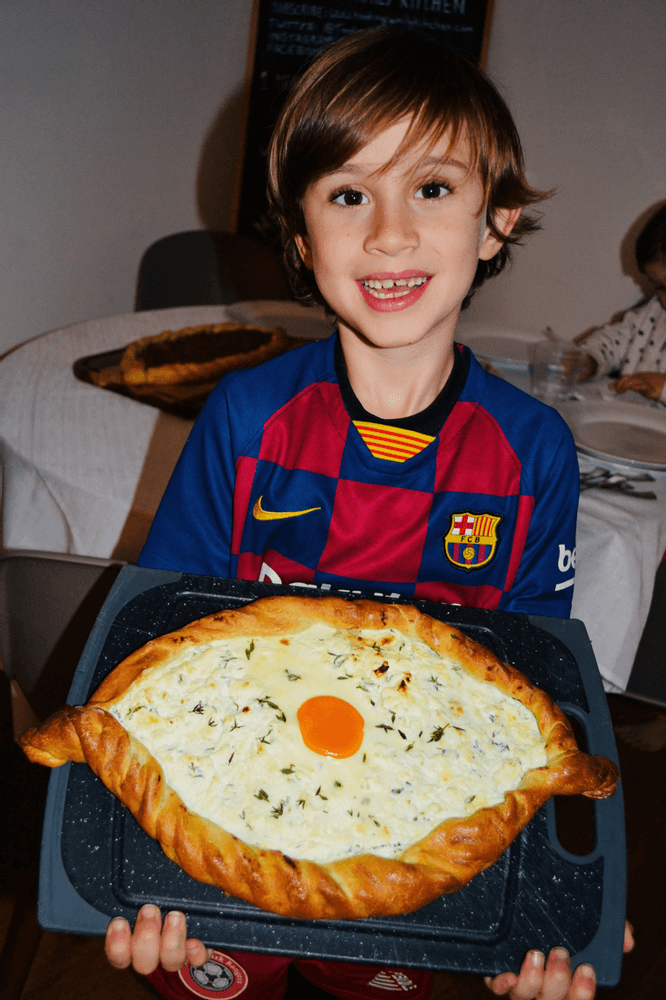
Cheese Pide topping
200g of ricotta cheese
100g of feta cheese, crumbled
A few sprigs of thyme leaves, removed from storks
Salt and pepper to taste
1 egg (fresh as possible)
Olive oil
What to do with it...
- Dissolve the yeast in ½ cup of water and leave to the side for a few minutes until it gets a bit frothy. Mix the flour and salt in a large bowl and make a well in the middle into which you pour the olive oil and dissolved yeast and water and combine well with your hands until a dough like consistency – add a little more water or a little more flour to achieve correct consistency and it stops sticking to your fingers. At this point remove from the bowl and knead on a clean surface for 5 mins before covering in the bowl and resting for an hour.
- Whilst resting make the toppings and in a heavy bottom pan heat some oil and fry the opinions for a couple of minutes before adding peppers and garlic and continue to fry for 5 minutes until the onions are translucent. Stir in the tomatoes, season and add lemon juice and take off the heat and allow to cool. When cooled combine with the minced beef and put to one side,
- In another bowl combine with ricotta gently with the crumbled feta and thyme leaves and seasoning – set to one side.
- Once the dough has doubled in size remove and cut in half and roll into 2 oval shapes of approx. 5mm thickness and place on a lined baking tray.
- Put each mixture generously on each oval leaving approx. 2 cm around the edges and then gently go around the edges folding in a little and twisting the ends in.
- Brush the dough with the egg wash and drizzle oil over each before baking in a pre-heated oven 200C for 25 mins or until the toppings are cooked and the dough is golden brown.
Hunkar Begendi (Sultan's Delight)
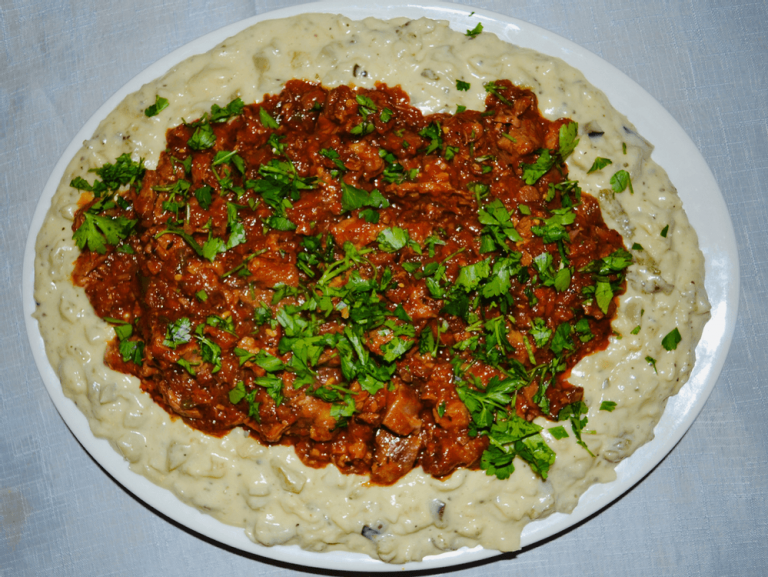
What’s in it...
Red pepper paste
3 red peppers
2 tbsp of tomato paste
1 tsp pf cayenne pepper
1 tsp salt
3 tbsp olive oil
Lamb
4 tbsp olive oil
1kg of lamb shoulder, boned and trimmed
1 cup of red pepper paste
1 large onion, chopped
3 cloves of garlic, minced
1 green pepper, de-seeded and thinly sliced
2 tsp of dried oregano
Salt and pepper to taste
250ml of hot water
Chopped parsley, to garnish
Aubergine puree
4 medium aubergines
3 tbps spoon butter
3 tbsp flour
Approx. 400ml of full milk
100g of grated parmesan
1 lemon, juice
Salt and pepper to taste
What to do with it...
- In a pre-heated oven to 200C roast the red peppers and aubergines for approx. 30 mins until the skins are darkened. Put the peppers in a container and cover with clean film whilst you chop aubergines in half and scoop out the flesh tearing apart with forks and putting to one side. When finished peel and de-seed the peppers.
- Blitz the peppers in a food processor with the tomato paste, cayenne pepper and olive oil and out to one side.
- Heat a large heavy bottomed pan with lid and heat the oil before browning the lamb in batches. Throw the onions into the pan adding a little more oil if necessary and fry for a minute before adding the garlic and green pepper and continuing to fry for 2 minutes. Return the lamb to the pan and add the tomatoes, oregano and seasoning and top up with the hot water. Bring to the boil and then gently simmer with the lid on for approx. 90- minutes.
- Max a roux by melting the butter gently on a heavy bottom pan and then mixing in the flour. Gradually add the milk making sure you don’t burn and keep adding as it gets thicker, at the end when the consistency is right add the parmesan, shredded aubergine, seasoning and lemon juice. Put to one side and re-heat later if lamb is not ready.
- Check the lamb – it is ready when the lamb is tender and sauce is thick. If necessary remove the lid and cook for longer until right consistency or if too dry add a little water.
- When ready, serve the lamb on top of the aubergine puree and garnish with parsley.
Baklava
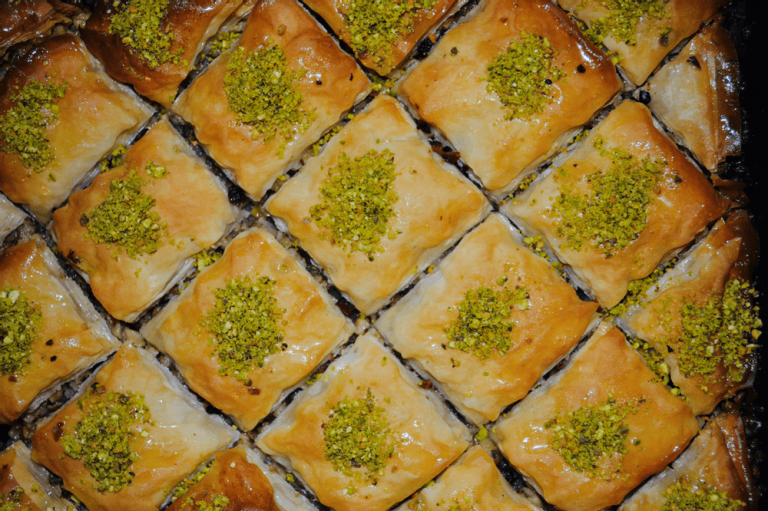
What’s in it...
25 sheets of Filo pastry – normally one pack.
½ cup unsalted butter, melted but not hot
250g of walnuts, chopped
2 tbsp ground pistachio kernels
2 cups sugar
2 cups water
1 slice of lemon
What to do with it...
- Leave the filo pastry to get to room temp always keeping covered when not using. Make a syrup by adding the water, sugar and lemon to a pan and bring to the boil before simmering for approx. 15 mins.
- Cut the pastry sheets to fit the baking tray you are using and butter the tray well before starting to layer the sheets of filo in the tray buttering each sheet. When you have reached 5 sheets butter and add ¼ of the chopped walnuts spreading evenly.
- When you have used up all the sheets and walnuts cut through them in vertical and then diagonal strips all the way to the bottom of the pan before baking in a pre-heated oven at 200C for approx. 30 min and its golden brown and cooked through.
- Remove from the oven and ladle the syrup over the baklava and spoon over the syrup evenly before allowing it to sit uncovered for a few hours so that the syrup soaks into the layers.
- Garnish with a sprinkle of ground pistachio on each piece.
Course 1
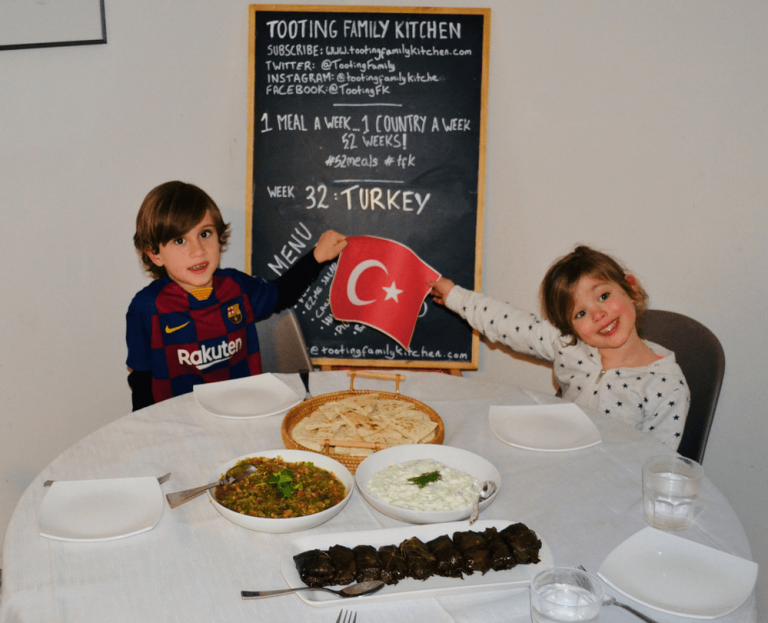
Course 2
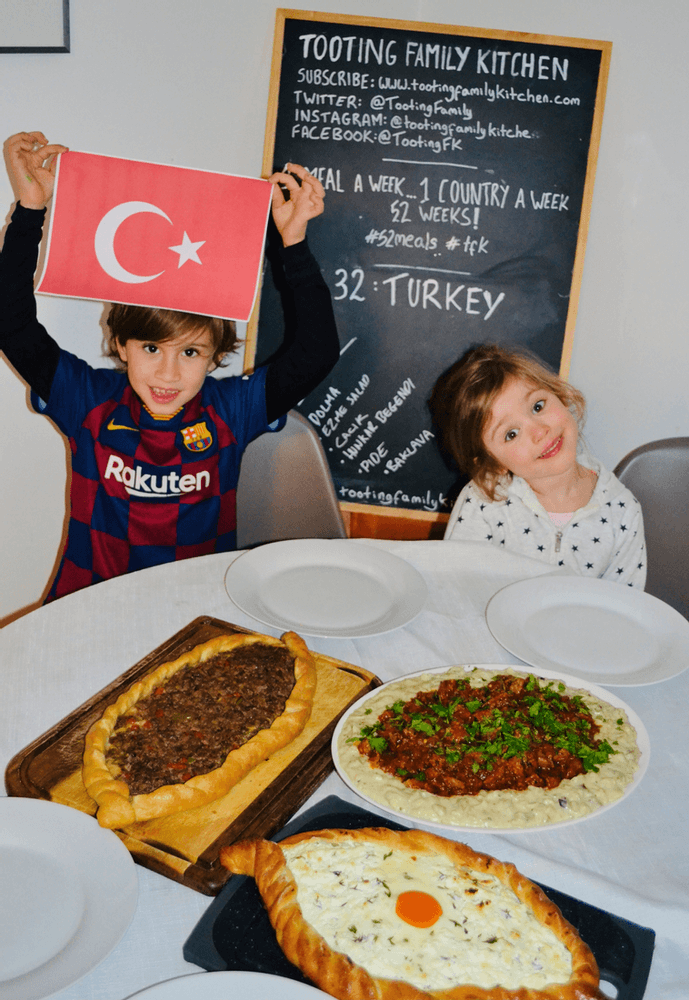
Course 3
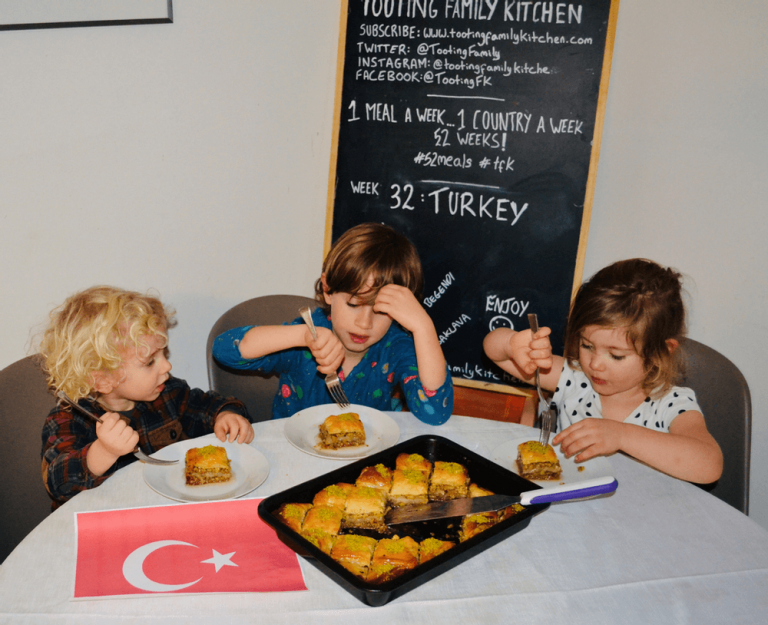
Thank you Turkey!!!
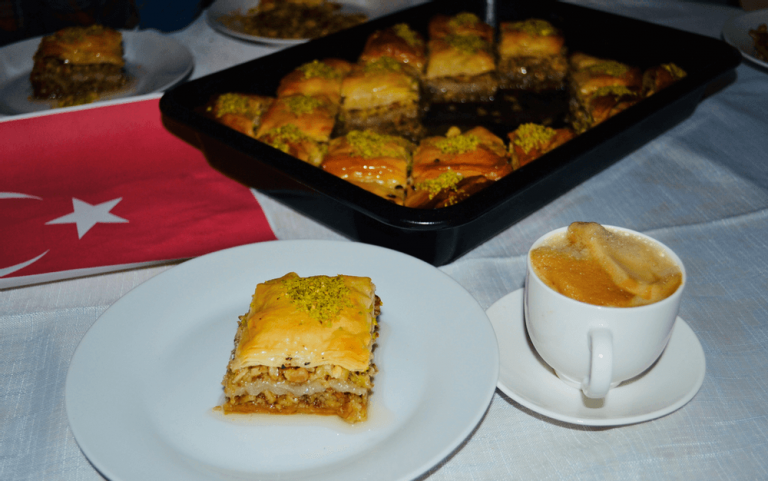
Thank you Turkey, that was epic! Can’t wait to explore more of your cuisine.
Next week we are excited to visit Mexico … please don’t forget to SUBSCRIBE (scroll to bottom) & SHARE and if you have any International Food ideas or recipes from around the world you wish to share please do drop us a line 👍
Check out other destinations here.
You can also follow us on Instagram, twitter and Facebook
See you next week!
Tooting Family Kitchen
#tootingfamilykitchen #getkidscooking #familycooking #homecooked #worldfood #tooting #turkey #turkishfood #kidscooking #getkidscooking #familycooking #internationalfood #CookingBuddies
